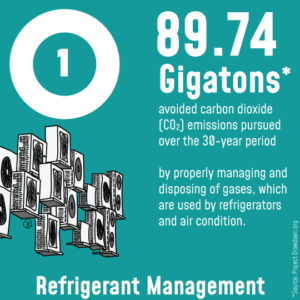
Much has been made of whether and how the stock market can meaningfully support climate action. Because most transactions occur in the secondary market, trading shares of listed companies appears rather removed from the “real” economy, where tangible decarbonization takes place.
While greenhouse gas emissions reduction is more traceable with a venture capital (VC) investment in a climate solutions company or a bank loan for a climate-friendly project or product, the stock market is not a neutral bystander in the climate crisis.
Publicly traded companies continue to prop up the fossil fuel and deforestation industries by providing a means to make money from injustice. For example, in the first two weeks after the 2022 invasion of Ukraine, the prices of oil, coal and gas increased by roughly 40 percent, 130 percent and 180 percent in Europe, respectively; this enabled fossil fuel stock market investors to benefit from the appreciation of stock prices and potentially higher dividends.
On the climate positive side, the existence of the stock market increases the number and quality of climate solutions companies. Because VC investors look forward to exit events, whereby they liquidate their equity position in a startup to achieve returns, the initial public offering (IPO) is one of the main ways to attract such investors. The absence of a stock market would therefore limit the universe of new climate companies, as fewer VC funds would be willing to invest in climate startups.
Stock exchanges also increase the opportunities for climate solutions to scale by building capital in IPOs and signaling to other forms of capital, such as bank lending, that companies are creditworthy. This is why facilitating capital formation, one of the three core mandates of the Securities and Exchange Commission (SEC), is vital for climate action.
Beyond the NYSE
Carbon Collective, an investment product developer and asset manager that allows retirement accounts, brokerage accounts and trusts to invest in climate-friendly stock and bond portfolios, created the Carbon Collective Climate Solutions U.S. Equities ETF. The underlying research to create the exchange-traded fund uses the Project Drawdown solution list and is publicly available and searchable via a database. In total, the U.S. climate stock list has 186 companies that pass an exclusionary filter, meaning that the companies generate at least half of their revenue from climate solutions, and 129 pure-play climate companies. The existence of such an ETF, and the fact that the universe of investable opportunities is rich, indicates the role that the U.S. market can play in scaling climate solutions.
The trouble is most people are not U.S.-based, and most economic activity takes place outside of the U.S. If the world is to sufficiently invest in a viable planet, investors and lenders must back climate solutions companies globally, notably where most people live — in the Global South, also known as the Global Majority.
In its recent database update, Carbon Collective added climate companies listed in the Global Majority. Although not yet covering the entire world, the climate solutions stocks database now includes three additional regions: the African Union (AU), the Association of Southeast Asian Nations (ASEAN) and the Community of Latin American and Caribbean States (CELAC). These economic zones represent $3 trillion, $3.3 trillion, and $7 trillion in annual GDP, respectively and in total represent a population of 2.7 billion.
If the world is to sufficiently invest in a viable planet, investors and lenders will have to back climate solutions companies globally, notably where most people live — the Global South, also known as the Global Majority.
Bridging the geographical divide
Companies listed on the AU, ASEAN and CELAC stock exchanges total 1,034, 3,373, and 1,611, respectively; in the U.S., there is a universe of 4,500 companies. The companies in the selected Global Majority regions were also tilted toward basic manufacturing, with ASEAN oriented more toward manufacturing, CELAC oriented more toward agriculture and commodities, and the AU oriented more toward grid expansion.
Some companies at first glance appear to be climate friendly but did not pass muster with Carbon Collective’s methodology, which includes removing any company that does not generate at least half of its revenue from climate solutions, removing companies that have been credibly accused of fraud, and including companies that build a climate solution found in Project Drawdown. For example, Carbon Collective evaluated a battery company in Jamaica — previously home to the world’s best-performing stock market in recent years — but unfortunately this company made almost 100 percent of its revenue from selling car batteries for internal combustion engine-based cars (and not electric cars). In the AU, only 21 companies passed the filters.
In South Africa, Metair provides battery systems to help deal with the unstable electrical grid; Mpact makes paper products from over 50 percent recycled materials; most other South African companies cover solar, low-carbon energy related mining, and grid expansion largely based on copper wiring.
“Many of the economies in the Global Majority are rapidly expanding,” said Carbon Collective founder Zach Stein. “But these economies need to grow on clean rather than fossil fuel energy. This research underscores the amount of work yet to be done to bridge the gap between the current map of climate solutions. ”
Another year of insufficient action
The global climate summit, COP28, is taking place in Dubai after another year of insufficient action toward financing climate solutions for the Global Majority. Clarification of Article 2.1(c) of the Paris Agreement, which states that finance flows should be “consistent with a pathway towards low greenhouse gas (GHG) emissions and climate-resilient development,” would be a helpful outcome at this year’s COP.
For example, mandating that listed companies disclose their GHG emissions and that stock exchanges facilitate climate capital formation would be aligned with Paris goals. It’s time for market participants to take sufficient action by investing in Global Majority capital markets for climate solutions companies, such as the ones listed by Carbon Collective, and to support financing climate-positive companies from early to late stage.
- SEO Powered Content & PR Distribution. Get Amplified Today.
- PlatoData.Network Vertical Generative Ai. Empower Yourself. Access Here.
- PlatoAiStream. Web3 Intelligence. Knowledge Amplified. Access Here.
- PlatoESG. Carbon, CleanTech, Energy, Environment, Solar, Waste Management. Access Here.
- PlatoHealth. Biotech and Clinical Trials Intelligence. Access Here.
- Source: https://www.greenbiz.com/article/investors-should-look-global-south-scale-climate-solutions
- :has
- :is
- :not
- :where
- $UP
- 1
- 10
- 100
- 130
- 2022
- 50
- 500
- 7
- a
- Accounts
- accused
- Achieve
- Action
- activity
- added
- Additional
- africa
- African
- After
- agriculture
- aligned
- allows
- almost
- also
- Although
- American
- amount
- an
- and
- annual
- Another
- any
- appear
- appears
- appreciation
- ARE
- AS
- Asean
- asian
- asset
- Association
- At
- attract
- available
- back
- Bank
- based
- basic
- batteries
- battery
- battery systems
- BE
- because
- been
- benefit
- between
- Billion
- Bloomberg
- bond
- BRIDGE
- brokerage
- build
- Building
- but
- by
- CAN
- capital
- capital formation
- Capital Markets
- car
- carbon
- Caribbean
- cars
- clean
- Climate
- climate action
- climate crisis
- Coal
- Collective
- commission
- Commodities
- community
- Companies
- company
- consistent
- continue
- cop28
- Copper
- Core
- cover
- covering
- create
- created
- crisis
- Current
- Database
- deal
- decarbonization
- deforestation
- Developer
- Development
- DID
- Disclose
- dividends
- does
- done
- Dubai
- Early
- ECB
- Economic
- economies
- economy
- Electric
- electric cars
- Emissions
- enabled
- energy
- Entire
- Equities
- equity
- ETF
- Ether (ETH)
- Europa
- Europe
- evaluated
- events
- example
- exchange
- Exchange Commission
- exchange-traded
- Exchanges
- Exit
- expanding
- expansion
- facilitate
- fact
- fewer
- filter
- filters
- finance
- financing
- First
- Flows
- For
- formation
- forms
- Forward
- fossil
- Fossil fuel
- found
- founder
- fraud
- friendly
- from
- Fuel
- fund
- funds
- gap
- GAS
- GDP
- generate
- geographical
- GHG
- GHG emissions
- Glance
- Global
- Globally
- Goals
- greenhouse gas
- Greenhouse gas emissions
- Grid
- Grow
- Half
- Have
- help
- helpful
- higher
- Home
- How
- HTML
- HTTPS
- if
- in
- includes
- Including
- Increase
- increased
- Increases
- indicates
- industries
- initial
- initial public offering
- initial public offering (IPO)
- injustice
- internal
- invasion
- Invest
- investing
- investment
- Investors
- IPO
- IPOs
- ITS
- Jamaica
- jpg
- known
- largely
- Late
- Latin
- Latin American
- least
- lenders
- lending
- LIMIT
- liquidate
- List
- Listed
- live
- loan
- Look
- Low
- low-carbon
- made
- Main
- Majority
- make
- make money
- MAKES
- manager
- mandates
- mandating
- manufacturing
- many
- map
- Market
- Markets
- materials
- meaning
- means
- Methodology
- Mining
- money
- more
- most
- Nations
- Need
- Neutral
- New
- notably
- now
- number
- occur
- of
- offering
- Oil
- on
- ONE
- ones
- only
- opportunities
- or
- Other
- Outcome
- outside
- over
- Paper
- paris
- participants
- pass
- passed
- pathway
- People
- percent
- Place
- planet
- plato
- Plato Data Intelligence
- PlatoData
- Play
- population
- portfolios
- position
- positive
- potentially
- previously
- Prices
- Product
- Products
- project
- prop
- provides
- providing
- public
- public offering
- quality
- rapidly
- rather
- real
- recent
- recycled
- reduction
- regions
- related
- Removed
- removing
- represent
- research
- respectively
- retirement
- retirement accounts
- returns
- revenue
- Rich
- Role
- roughly
- s
- Said
- Scale
- scaling
- SEC
- secondary
- Secondary Market
- Securities
- Securities and Exchange Commission
- selected
- Selling
- Shares
- should
- side
- solar
- solution
- Solutions
- South
- South Africa
- South African
- southeast
- Stage
- startup
- Startups
- States
- stock
- stock exchanges
- stock market
- Stocks
- such
- sufficient
- Summit
- support
- Systems
- Take
- takes
- taking
- tangible
- than
- that
- The
- the world
- their
- There.
- therefore
- These
- they
- this
- three
- time
- to
- Total
- toward
- towards
- traceable
- traded
- Trading
- Transactions
- trouble
- Trusts
- two
- u.s.
- Ukraine
- underlying
- underscores
- unfortunately
- union
- Universe
- Update
- uses
- VC
- venture
- venture capital
- venture capital (VC)
- via
- viable
- vital
- ways
- Weeks
- were
- whether
- which
- why
- will
- willing
- with
- Work
- world
- world’s
- would
- year
- years
- yet
- zach
- zephyrnet
- zones









